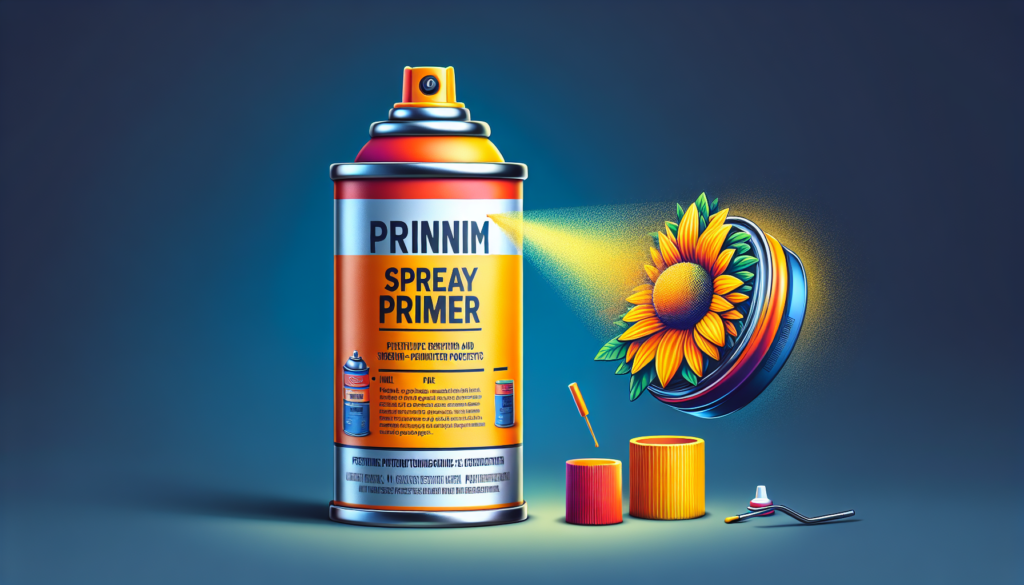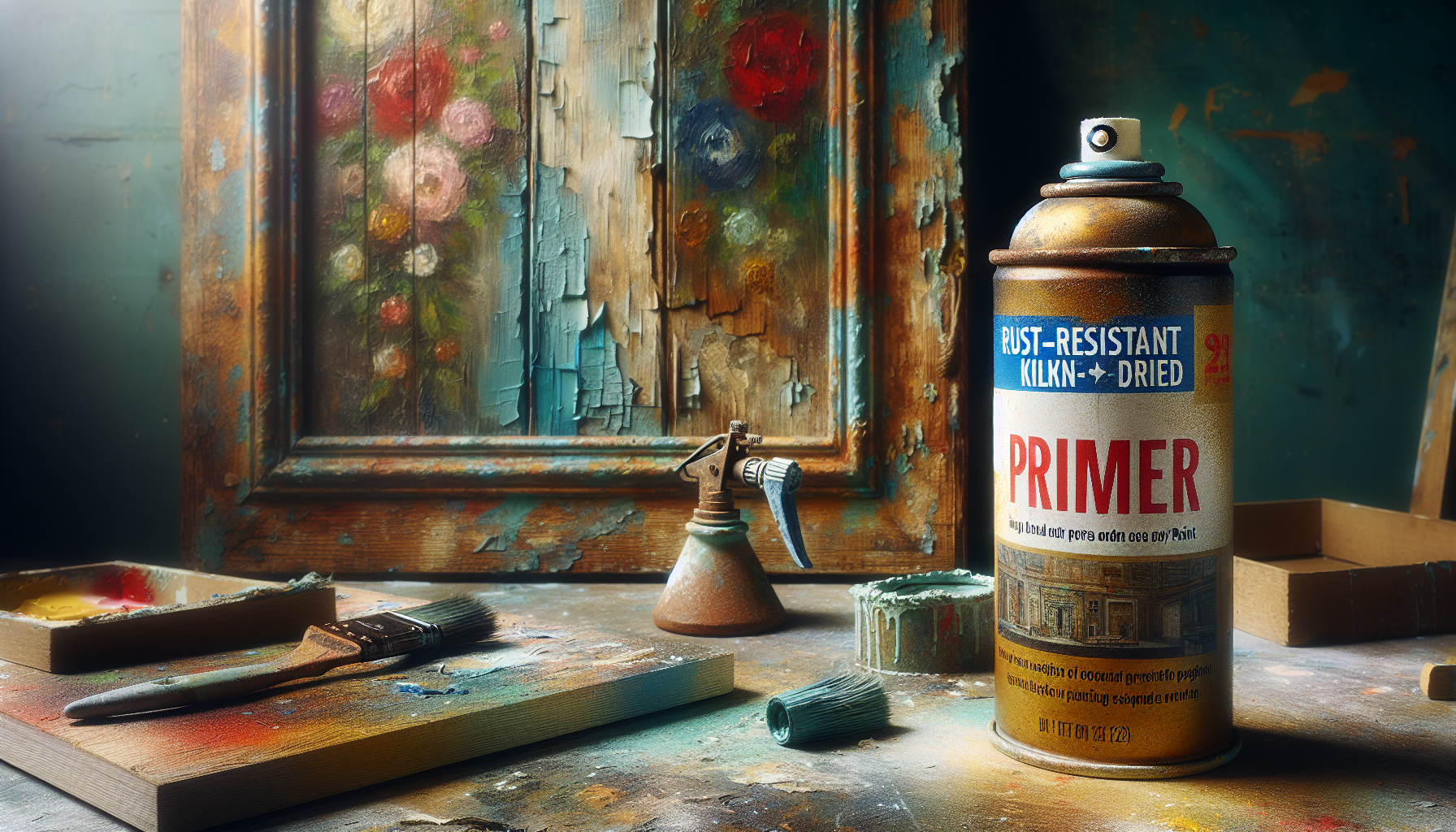Ever wonder about the myriad possibilities of working with paint and wonder if you could spray primer over an already painted surface? The short answer is yes, you can! In the world of home décor or artistic creations, you hold the brush, and hence, the potential to bring innovation to life. So, let’s unfurl the mystery of whether you can or cannot spray primer over paint. It might sound unconventional, but you’d be surprised by the results that can be achieved. Believe it or not, this technique might unlock a new chapter of creativity in your painting journey.
What is primer?
Definition of primer
Primer is a preparatory coating that is generally applied to the surface before you apply paint. Think of it as the base layer that ensures the paint sticks to the surface and lasts longer. Its consistency is generally thicker than paint and it’s designed to adhere to a range of surfaces including wood, metal, and drywall.
Purpose of primer
Primers serve several purposes. They help provide a stable base for the paint, maxmizing its adhesion to the surface. They can help mask minor imperfections on the surface, creating an evenly textured base for painting. Additionally, primers can prevent stains and knots from showing through the final paint job.
Types of primer
There are several types of primer available, depending on the nature of your project. These include oil-based primers, which are ideal for surfaces that are prone to staining; latex-based primers, which work well on most surfaces; shellac primers, which are perfect for smoke and water-damaged surfaces; and enamel primers, which are great for surfaces that will be exposed to heavy wear and tear.
Can you spray primer over paint?
Understanding the purpose of primer and paint
Primer and paint serve distinctly different purposes. While the primer is designed to stabilize and prepare your surface for painting, paint provides the color and finish. On certain occasions, you may wonder whether you can spray primer over already painted surfaces. The answer is yes, but understanding the purpose of each will assist you in deciding when it’s a suitable course of action.
Factors to consider before spraying primer over paint
Before spraying primer over paint, consider a few factors. Firstly, the condition and type of the existing paint are important. If the paint is peeling or chipping, priming directly over it might not be the best option. Also, if the paint is a high-gloss finish, primer may not adhere as well. Secondly, the color contrast is a factor. If you’re planning to paint a lighter color over a darker one, priming first can make this transition smoother.

Advantages of spraying primer over paint
Enhanced adhesion
Among the advantages of spraying primer over paint, enhanced adhesion tops the list. Primer seals the existing paint and provides a good base for the new paint to adhere to, making your paint job more durable.
Improved surface uniformity
Primer minimizes the appearance of brush strokes from the previous paint job, helping to maintain a smoother, more uniform finish.
Cost-effectiveness
Primer can also contribute to cost-effectiveness. Not only does it make your paint job last longer, but using a primer can also help cover dark or bold colors more easily, potentially reducing the number of coat layers you need to achieve your desired shade.
Time-saving
In contrast to stripping off existing paint, applying primer over paint can be a time-saving option. It can be a shorter route to getting the finish you want.
Disadvantages of spraying primer over paint
Appearance and texture issues
One possible downside of spraying primer over paint is that it can lead to an inconsistent or rough texture, especially if the underlying paint layer is peeling or flaking.
Possible compatibility problems
There could be compatibility issues if you plan to use a different type of paint over the primer than the existing paint (e.g., using a water-based primer over oil-based paint). Doing so may affect the adhesion and finish.
Additional preparation required
Applying primer over an existing paint job often involves additional preparation, like cleaning and lightly sanding the surface to help the primer adhere better.

When is it suitable to spray primer over paint?
Ideal scenarios for spraying primer over paint
It is usually suitable to spray primer over paint in scenarios where the existing paint is still in decent condition or if the new paint is a significantly different color. Priming can help to bridge the color difference without requiring multiple coats.
Surface conditions that allow for priming over paint
The surface condition also determines the suitability of spraying primer over paint. If the paint is flat or matte and in good shape with minimal flaking, peeling, or cracking, you can usually prime right over it.
How to safely spray primer over paint
Step 1: Prepare the surface
Before anything else, cleaning the painted surface will remove any grime or dust that could hinder adhesion. Lightly sanding the area can also help the primer adhere better.
Step 2: Choose the right primer
Choosing a primer depends on the type of surface being painted and the type of paint being used. When in doubt, seek advice from your local paint supplier.
Step 3: Ensure proper ventilation
Safety should be your top priority. Ensure proper ventilation to avoid inhaling any harmful fumes.
Step 4: Apply primer in thin, even coats
Apply the primer in thin, even coats to avoid unwanted texture or drips. A sprayer often does an excellent job of achieving a uniform layer.
Step 5: Allow sufficient drying time
Once you’ve sprayed the primer, allow sufficient drying time before applying paint on top. This could vary depending on environmental factors and the type of primer used.
Step 6: Evaluate the results
After the primer has dried, evaluate the results. If necessary, a light sanding can help smooth out any minor imperfections before applying paint.
Alternatives to spraying primer over paint
Strip and repaint
One alternative to spraying primer over paint is to strip back the existing paint to the original surface and start fresh.
Sand and recoat with paint
Another method is to sand the existing paint until smooth and then apply your new paint.
Use a paint and primer combination product
A simpler alternative might be to use a paint and primer in one. These products offer a good solution for minor color changes or painting over surfaces that are in good condition.
Common misconceptions about spraying primer over paint
Primer as a solution for all paint-related issues
While primer can certainly help with long-lasting adhesion and color shifts, it’s not a magic solution for all paint-related problems. If the existing paint is in poor condition, priming over it may not improve the outcome.
The necessity of sanding between primer and paint layers
Another misconception is that it’s always necessary to sand between the primer and paint layers. While this can help in achieving a smooth finish, it’s more crucial to allow enough drying time in between.
Summary
Understanding the potential of spraying primer over paint
Under the right circumstances, spraying primer over paint can promote a durable, even, and vibrant finish. It’s important, however, to understand when it’s most beneficial and how best to accomplish it.
Considering the pros and cons
By weighing the pros (like improved adhesion) and cons (like possible texture issues), you can make an informed decision about whether this process is right for your project.
Proper application techniques and alternatives
Arming yourself with proper techniques and knowing what to avoid can ensure better results. It’s also helpful to be aware of alternatives if priming over paint isn’t a fit for your project.
Conclusion
In summary, while spraying primer over paint is absolutely doable and can offer several benefits, it’s not always the best method. Thus, understanding the condition of your surface, the appropriate type of primer, and the proper application process are key. Ultimately, this knowledge will allow you to choose the best route for your painting task — be it priming over an existing paint job or considering an alternative method — steering you toward achieving superb results in your painting project.



